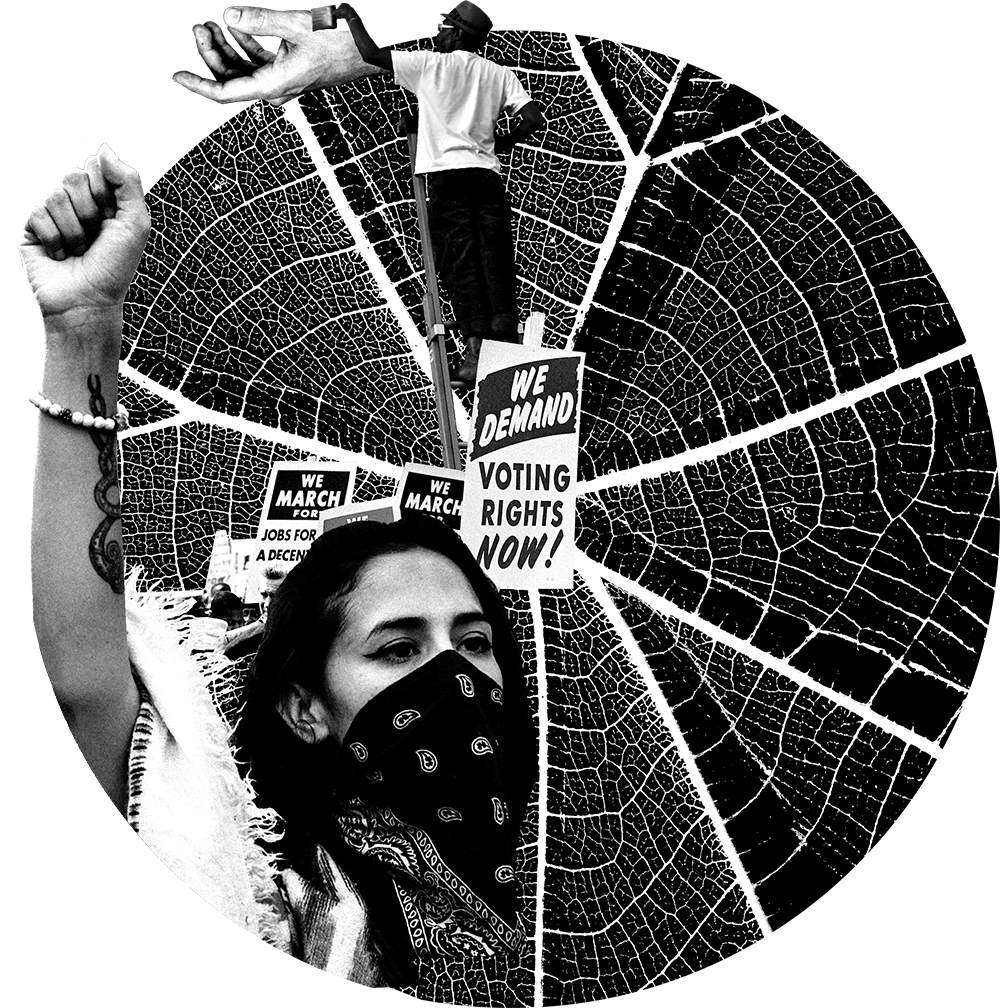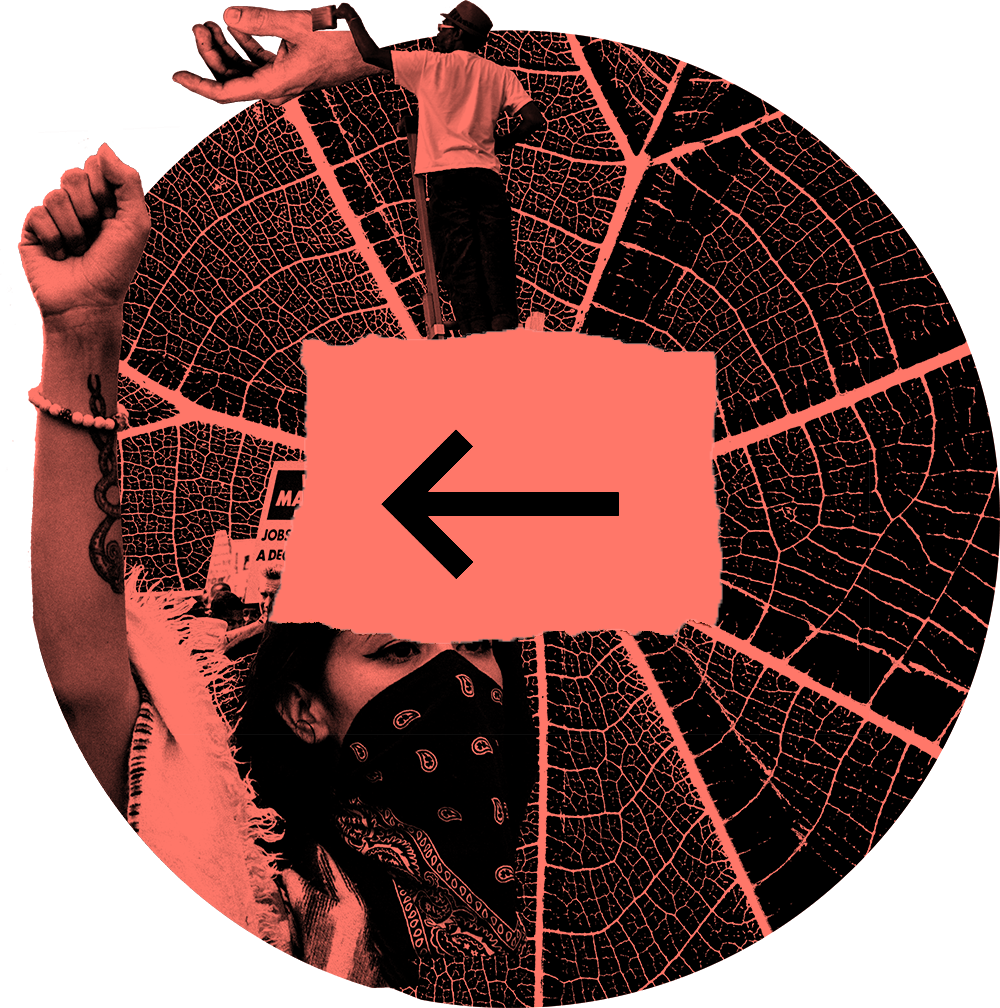Connect with neighbors
vote to organize!
Connecting with your neighbors is the foundation of community organizing. If a group of people can represent themselves within their community or around a shared value in a way that the government is unable or unwilling to, connecting with your neighbors is a small, actionable step that also builds the capacity in a community that may not exist today. Every individual must be ready for collaboration and leadership for us to move our equitable, effective, and sustainable future forward.
Support the social fabric of our communities by showing up in person at neighborhood association meetings, community events and social meetups. Organize block parties with your neighbors, help plan neighborhood cleanups and tree plantings, and offer assistance (or even just a quick hello) to neighbors. Consider starting up a food cooperative, tenants union, or even a composting program together. Raise up community leaders to run for local elected office who you know will represent the common good, while organizing small-scale commons councils with those neighbors and leaders. In times of hardship, take lessons from Depression-era farmers, who would employ direct action at auction when families lost their farms, standing in silent solidarity or outright threatening the auctioneers until the families’ low bids were accepted.
Connecting with the people around us extends into the virtual space as well. Demand more from our online communities. We can hold the companies who create them accountable when things go wrong and mistrust builds. Consider organizing a neighborhood Solid Project or other online community away from the all-powerful Silicon Valley social media platforms—one that the community runs itself. Keep in mind that these must be easy for everyone to access and use above all else. Be prepared to assist your neighbors with access if they need it. CityLab writer Linda Poon notes that technology may be the key to repairing neighborhood bonds that have been broken over the past sixty years, in part due to technological trends that have driven us apart. However, Poon cites one of those aforementioned Silicon Valley apps, Nextdoor, as a potential solution. The impersonal, data-profit driven nature of this platform has led to it being nicknamed “SnitchApp” and being described as having a “Karen problem,” only reinforcing the need for a decentralized, autonomous, people-powered form of future social media.
The Buy Nothing Project seeks to truly connect neighbors through a hyper-local network of giving. Participants ask for, offer, and share material things and “gifts of self,” where time, skills, and services are given. This grassroots movement exists outside the commercial economy, with a focus on strengthening communities.
The suburbs and sprawl have been another factor contributing to the loss of neighborhood relationships, but the world is rapidly urbanizing; more than half of the world’s population is expected to live in cities by 2050. This means that communities must act now to restrengthen themselves so that the newly urbanized world doesn’t face unprecedented social isolation and loneliness. In order for this revolution to work, it must be fun.
More than anything else, neighbors should look for ways to open recreation to beyond their immediate circles, hosting outdoor film nights projected onto the sides of buildings, dance parties, social gatherings, barbeques, and cooperative sporting events. Find ways to make the culture of the neighborhood welcoming and open for the coming decades, a sanctuary space for those new arrivals who will themselves be “urbanizing” out of a dream to belong and to thrive. Form a new reality around the power that neighbors can create when working together.
For deeper organizing, one framework to use is Appreciative Inquiry when connecting with neighbors. Examples include:
- Ask your neighbor out for coffee, tea, or a drink of your choice.
- Set up one-on-one interviews with neighbors you will want to work with in the future.
- Take turns narrating each other’s personal stories. A personal story is a story that defines a trait that you think is core to who you are.
- Collaborate in a workshop to build a joint vision of the future and discuss small steps to get there.
Connecting with neighbors will also help in understanding the social, political and economic context of contemporary life. This will help map out where to tip the point of power. For example, advocacy for more support within the postpartum phase of a birthing parent’s experience will also need supportive non-birthing parents, neighbors who have shared these experiences, medical professionals to help through this new life milestone, and doulas to advocate on the group’s behalf. This may counteract the existing organizational structure of manufacturers, academic medical centers, and/or patriarchal societal expectations. This will challenge power imbalances and effectively address the issue equitably.
Connecting with neighbors—particularly those with a shared experience—is one of the best ways to build capacity, build a coalition for other future efforts, and to build interconnected relationships with other efforts in the neighborhood.




